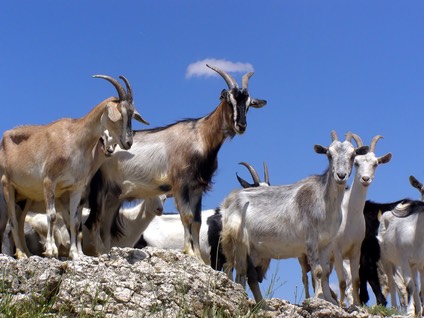
Photo: Fotolia
So ingeniously did Homer conceal the astronomical purpose of numerical data embedded in the
Odyssey that its importance in the construction of a luni-solar calendar system had been lost for
many centuries until publication of Homer’s Secret Odyssey (2011).
The following analysis of just one of the groups of numbers embedded in the Odyssey reveals
surprising detail about the lunar year - and Homer’s mathematical ingenuity.
Goat Island
In the course of his adventures, Odysseus and his fleet of ships arrive on an island inhabited only
by goats and this is how E V Rieu’s translation of the Odyssey describes the event:
'We fetched our curved bows and our long spears from the ships, separated into
three parties, and began shooting at the goats … nine goats were allotted to each
of the twelve ships under my command, but to me [Odysseus] alone (1)
they made an allotment of ten.' Od 9.155
In this paragraph it is the numbers that are important and the items to which they are attached
- parties of men, goats and ships - are ingenious aids to memory and categorisation.
In the story of Goat Island, Homer manipulates the numbers to detail the days, months and
seasons of a lunar year and provide a link to the solar year.
Note: the ancient Greek year had only 3 seasons - spring, summer and winter
Numbers from Goat Island
3 (parties of men)
12 (ships in the fleet)
9 (goats for each ship)
10 (extra goats for Odysseus)
1 (Odysseus ‘alone")
Cracking the code: Lunar Months and ‘Seasons’
Calculating the days in a lunar ‘season’
9 (goats for each ship) x 12 (ships) = 108
10 (extra goats for Odysseus) = 10
Total 118
118 = the number of days in a ‘season’ of four lunar months
Calculating the days in a lunar year
3 seasons (spring, summer, winter) x 118 = 354
354 = the number of days in a lunar year
A link with the solar year
1 (‘Odysseus alone’) + 10 (goats) = 11
11 is the number of days difference between the
lunar year of 354 days and the solar year of 365 days
There is much more concerning Homer’s astronomy and wizardry with numbers in
Homer’s Secret Odyssey, including data about the solar year, lunations, luni-solar cycles,
the Venus Year, the Venus Period, a major eclipse cycle, the ancient concept of pi,
a day-by-day projection of Homer’s annual luni-solar calendar, and other matters.
Next: Cycles of the sun, moon and Venus
Page Links
See also Homer the Astronomer-1 and Homer the Astronomer-2 on YouTube
Leave a comment on our blog: kfswood.co